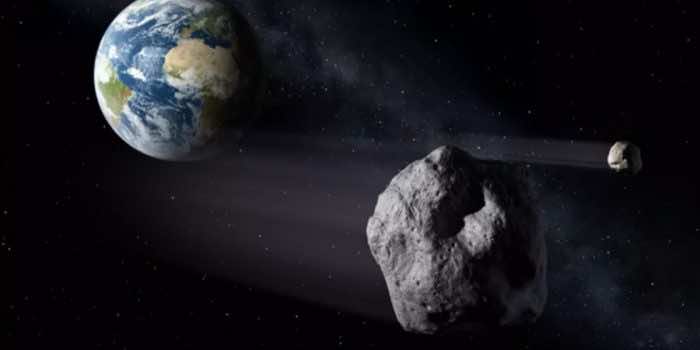Asteroids have always remained the center of attention for astronomers and physicists, but there are some asteroids that carry a significant impact because of their peculiar characteristics. An asteroid of a similar nature named Apophis has been identified by the researchers and is expected to take its course near the Earth in 2029. No, it’s not going to hit the earth, so there’s nothing to be worried about. This bizarre asteroid was discovered back in 2004 and since then, it has been traveling at a speed of more than 10,000 miles per hour and is about 1,100 feet (about 340 meters). The official name given to this asteroid is “99942 Apophis”.

It has been revealed from the research that Apophis would pass across the Earth at a distance of 20,000 miles in orbit. Even geostationary satellites that are currently in the Earth’s orbit are farther away from this distance. This means how close it would come, and obviously, this will have an impact on the Earth’s gravity. It can also be attracted to the Earth, but that’s just a worst-case scenario. Nothing like this is going to happen because of the very low probability of hitting the Earth. Another exciting fact is that people in the Eastern Hemisphere would also be able to catch sight of this most awaited asteroid with their naked eyes.
Such types of objects that pass adjacent to the Earth are called Near-Earth Objects (NEO), and they provide a great deal of opportunity for NASA and ESA researchers to study them in more detail and explore their impacts on the Earth. These asteroids become a focal point for researchers as soon as they come closer to the lunar orbit, known as the lunar distance (LD), which is about 239,000 miles. By seeing through the cosmic lens, the distance is not much more than a piece of grain.
Davide Farnocchia, who works at NASA’s jet propulsion laboratory, said, “When I started working with asteroids after college, Apophis was the poster child for hazardous asteroids.” With the support of recent optical observations and additional radar observations, the uncertainty in Apophis’ orbit has collapsed from hundreds of kilometers to just a handful of kilometers when projected to 2029. This greatly improved knowledge of its position in 2029 provides more certainty of its future motion, so we can now remove Apophis from the risk list.”
Another piece of good news is that this asteroid will not be able to hit Earth even after 2068. As NASA says, “A 2068 impact is not in the realm of possibility anymore, and our calculations don’t show any impact risk for at least the next 100 years.” Moreover, the astronomers had already explored the pictures of Apophis in West Virginia with the collaboration of “Green Bank Telescope” and “Goldstone”.

The results show exceptionally detailed and distinctive images at a resolution of fewer than 39 meters per pixel. The images were taken when the asteroid was 10 million kilometers away from the Earth, and researchers hope that they will be able to capture the images of Apophis with even better quality when it comes closer to about 18,000 miles within the orbit of Earth in 2029.


